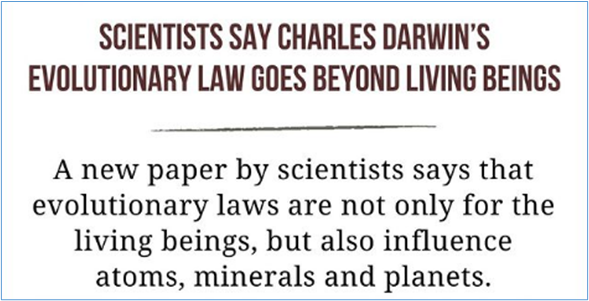PREVIOUS
New evolutionary law
October 22 , 2023
803 days
711
0
- Scientists have proposed a new evolutionary law that can explain the evolution of living and non-living entities, from minerals to stars.
- As life evolved from single-celled to multi-celled organisms, Earth’s minerals, for example, became more complex, creating diversity.
- This, in turn, drove biological evolution.
- Biodiversity leads to mineral diversity and vice-versa.
- The two systems, biological and mineral, interacted to create life as we know it today.
- Evolution occurs when a new configuration or a new arrangement of atoms and molecules works well and functions improve.
- Darwin defined function as primarily with survival.
- But the new study highlights at least three kinds of functions that occur in nature.
- The first function is stability, which means systems made up of stable arrangements of atoms or molecules will continue to survive.
- The second one includes dynamic systems with energy supply.
- The third is “novelty” — the tendency of evolving systems to explore new configurations or arrangements that can give rise to new behaviours or characteristics.

Leave a Reply
Your Comment is awaiting moderation.


